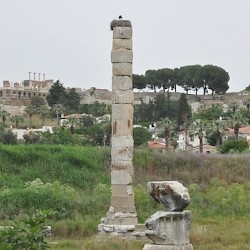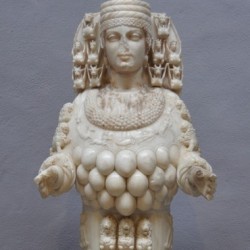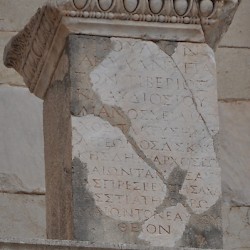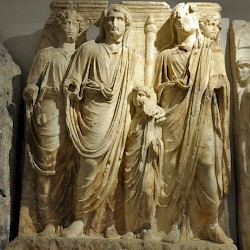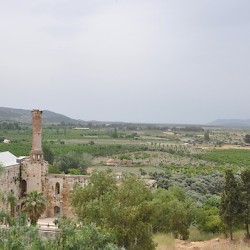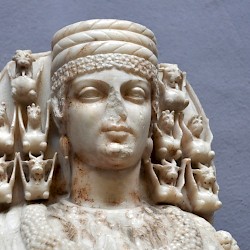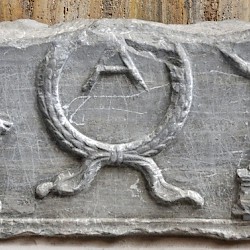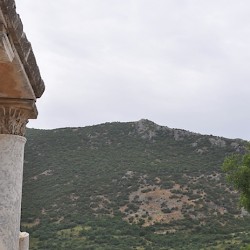Ephesus
Q47611Ephesus (modern Selçuk): ancient Greek town in western Turkey, one of the largest and best excavated cities of the ancient world.
Early History
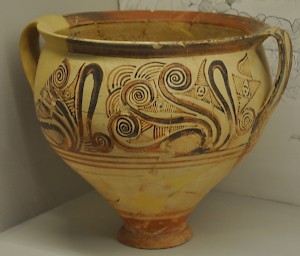
According to a legend that may contain an element of truth, an Athenian prince named Androclus once led Greek settlers to Ephesus. The Greeks believed that the settlement was a new foundation from the "Dark Ages" (c.1150-c.800 BCE), but we know that the city was considerably older: Hittite texts call it Abasa, and this city, the capital of a kingdom named Mira, may have existed as early as 1600 BCE. The site has been identified on Ayasoluk, i.e. the hill that is now dominated by the Church of Saint John.
Much of the history of early Ephesus is unrecorded. We know, however, that Cimmerians destroyed the Greek settlement in the seventh century BCE; later, Ephesus was added to the Lydian kingdom of Croesus, who rebuilt the famous Temple of Artemis. After c.547, the city belonged to the Persian empire. There is hardly any archaeological evidence from this age.
Hellenistic Age
Ephesus is occassionally mentioned in our sources for the fifth and fourth centuries BCE, but became really important when Lysimachus (r.305-281), one of the successors of Alexander the Great, chose to make it his capital. He wanted to be buried in the neighborhood, in the Belevi mausoleum. After the battle of Corupedium (281 BCE), in which Lysimachus fell, the city became part of the zone of influence of the Seleucid Empire and the kingdom of Pergamon. The Hellenistic Fountain dates back to this age.
Roman Age
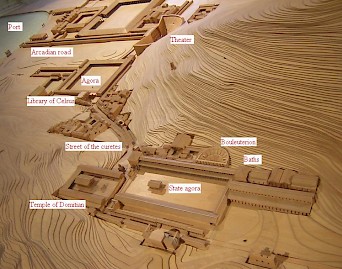
After the Romans had added the Pergamene kingdom to their realms (in 133 BCE), Ephesus became the seat of the governor of the Roman province Asia. Almost everything we see today, dates back to this period. For example, the theater: although constructed for the first time in the Hellenistic age, the Ephesians rebuilt it during the reign of the emperors Claudius (r.41-54), Nero (r.54-68), and Trajan (r.98-117). Another example is the Commercial Agora: constructed again in the Hellenistic period, it was rebuilt several times by the Romans.
Many monuments date back to the Roman age: the Gate of Mazaeus and Mithridates (the main entrance to the Commercial Agora), the Fountain of Domitian, the Arch of Hadrian, the Fountain of Trajan, the Library of Celsus, the Parthian Monument, for example. There are also temple for the emperors Domitian and Hadrian, countless smaller monuments, and the splendid Terrace Houses. From Late Antiquity is the Arcadian Road.
Late Antiquity
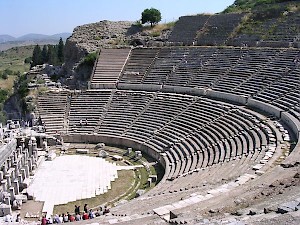
Ephesus was an important city in the history of Christianity. Paul taught in its synagogue and got himself into trouble when he was believed to have attacked the cult of Artemis.note In 431, an oecumenical council was organized at Ephesus, where it was decided that Mary was the mother of Christ as God (and not of Christ as human being).
The decline of Ephesus started when the harbor silted up. In the Byzantine age, the city was abandoned, although there was a Byzantine fort and there were several churches.
The Austrian archaeologists who started to excavate Ephesus in 1895, took several parts of the decoration of the ancient city to Europe (in 1906), where they are put on display on the lovely Ephesos Museum in Vienna, a series of quiet exhibition rooms in the former palace of the Habsburg emperors.
